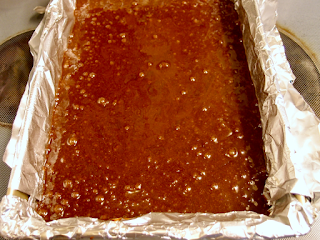12 March 2020
Recipe from Cook's Illustrated, January 2020
A recent issue of Cook's Illustrated provided another opportunity for more experience with homemade pizza. This recipe is different in using a cast iron pan to bake the pizza. There is no rolling of the dough or sliding the pizza on and off of an oven stone, instead it cooks in a cast iron skillet. This allows you to make a thick, airy crust using a very wet, sticky dough. You could add toppings but I stayed with the simple cheese pizza recipe published in the magazine.
The dough was made a day ahead and it took about 15 minutes. Bread flour, salt, and yeast were stirred together. Warm water was added and mixed until incorporated. The sticky, wet dough was kneaded by hand in the bowl for about a minute. The dough was pressed into a greased 9-inch round cake pan, covered with plastic wrap, and refrigerated.
About 22 hours later the dough was removed from the refrigerator and allowed to rest at room temperature for half an hour. It was pressed into a 12" cast iron skillet that had been coated with olive oil. The skillet was covered with plastic wrap and the dough left to rise. While the dough was rising, the sauce was made. Canned whole tomatoes were drained, then crushed by hand and placed in a food processor with some olive oil, salt, garlic, sugar, oregano, and red pepper flakes (about half the recipe amount). The mixture was processed until smooth. After the dough had risen the sauce was spread on top. A wall of shredded Monterey jack was made around the edge of the pan. Shredded fresh mozzarella was sprinkled over the pizza which was then baked at 400°. The almost finished pizza was moved to the stove top where it was cooked to finish browning the crust. It took about three hours from when the dough was removed from the refrigerator until it was served.
This is good pizza, definitely worth making again. The crust was crispy with a light, airy crumb. The sauce and cheese did not dominate the flavor, the crust was the star of the pizza. The frico, the rim of fried cheese around the rim, was okay but not an essential part of the meal. (And looking at the photos, perhaps I didn't press the Montery Jack cheese high enough above the dough.) The pizza was good the second night though it was not as crispy as when fresh. Using the skillet made handling the dough and pizza easier than rolling it out and transferring it to a pizza stone to bake.


















